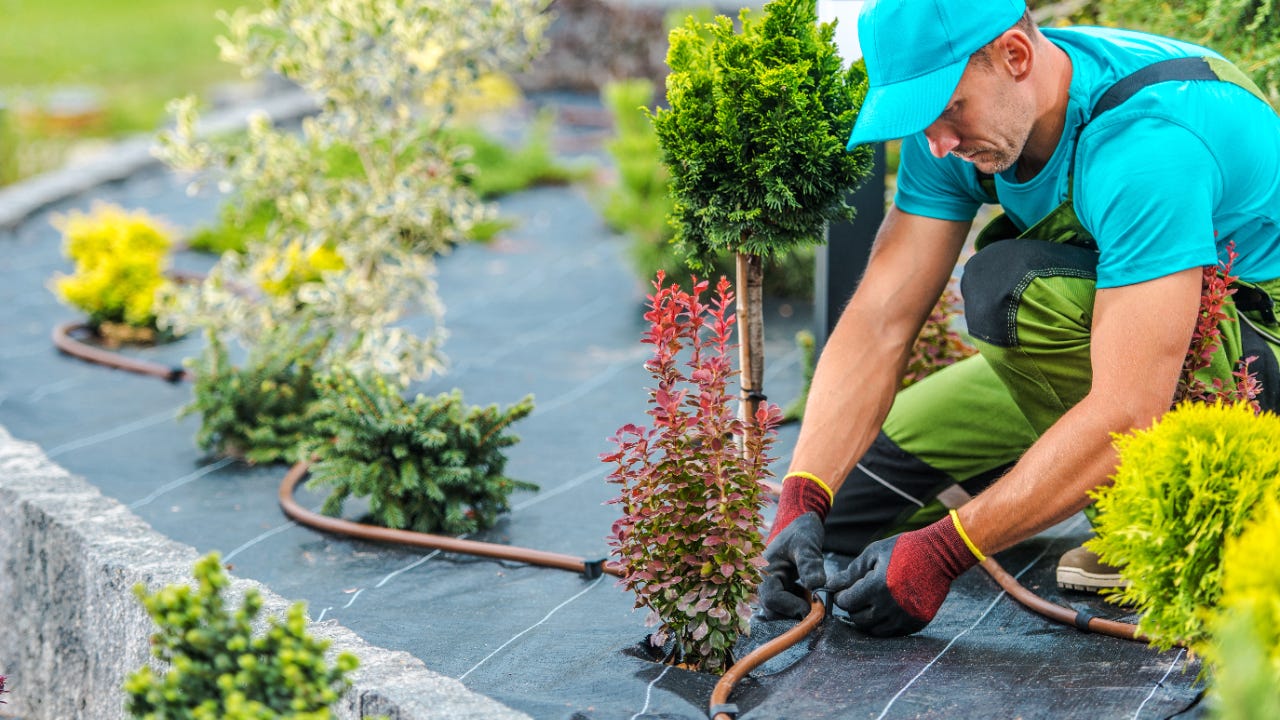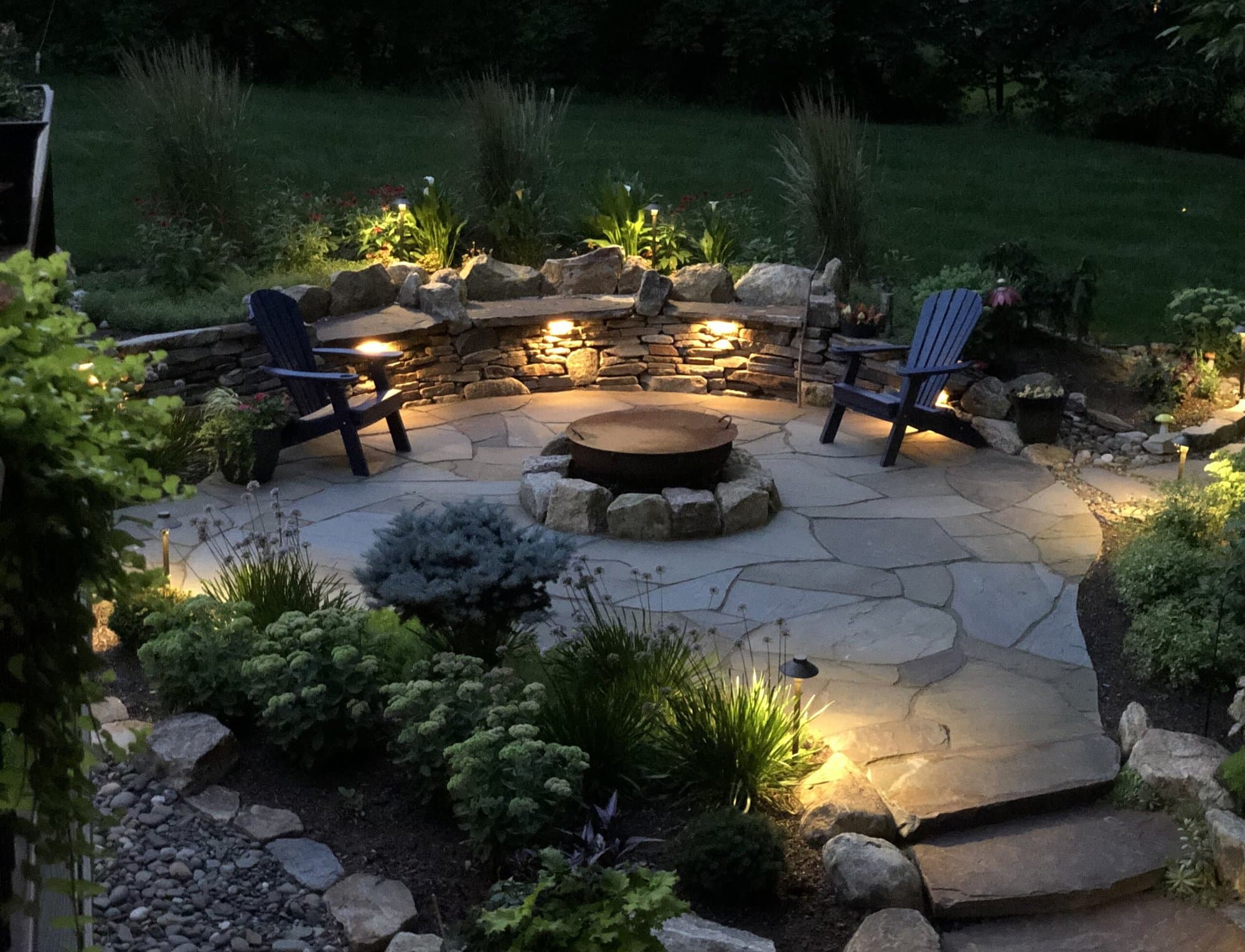A Comprehensive Guide to Creating and Implementing Effective Landscaping Solutions
The art and science of landscape design prolong beyond simple visual appeals; they involve a thoughtful assimilation of design concepts, environmental stewardship, and useful implementation. A detailed guide to reliable landscape design solutions starts with an extensive understanding of your outdoor space, highlighting the significance of percentage, unity, and balance. As we explore sustainable strategies and the choice of ideal plants, the ramifications for biodiversity and neighborhood wellness become increasingly evident. What strategies can one employ to guarantee these landscapes not only prosper but also thrive attuned to their surroundings?

Comprehending Landscape Style Concepts
One may question what fundamental components add to efficient landscape layout. At its core, effective landscape design depends upon numerous essential principles that guide the setup and option of elements within an area. These principles include unity, proportion, equilibrium, and rhythm, each serving to create a harmonious outside atmosphere.
Unity describes the natural relationship among numerous components, guaranteeing that they function with each other visually and functionally. Balance can be achieved via unbalanced or balanced setups, permitting the landscape to feel secure and welcoming. Percentage includes comprehending the scale of elements in regard to each other and the surrounding atmosphere, advertising aesthetic consistency and convenience.

Evaluating Your Outdoor Room
Prior to applying the concepts of landscape design, a comprehensive assessment of your outdoor room is crucial. This first evaluation helps define the range of your landscape design job and makes sure that your layout straightens with the unique attributes of your residential or commercial property. Begin by analyzing the measurements of your space, taking specific dimensions to comprehend the available location for numerous components such as patios, gardens, and paths.
Next, observe the existing features of your landscape, consisting of topography, dirt top quality, and water drainage patterns. These factors dramatically affect plant choice and positioning. In addition, examine the sunlight exposure throughout different areas throughout the day, as this will certainly influence the sorts of plants that grow in your garden.
Consider the microclimates produced by frameworks, trees, and other challenges, as they can affect temperature and wetness levels. Take note of any type of existing plants or hardscape aspects that you want to preserve or eliminate. This thorough evaluation lays the foundation for a knowledgeable and reliable landscaping remedy, guaranteeing that your layout is not just cosmetically pleasing but lasting and likewise practical for years to find.
Lasting Landscape Design Methods
These practices not just promote environmental balance but likewise enhance the useful and aesthetic worth of a landscape. Executing effective irrigation systems, such as drip watering, reduces water waste and guarantees that plants receive ample moisture (Palm Desert Landscaping).

Another effective method is the critical positioning of bushes and trees to provide natural windbreaks and color, hence lowering energy costs (Palm Desert Landscaping). Rainfall gardens can be integrated right into the landscape design to take care of stormwater drainage successfully, filtering system contaminants before they go into waterways
Picking the Right Plants
Picking the right plants for your landscape is crucial to achieving both visual charm and environmental harmony. The process begins with an understanding of your regional climate, dirt problems, and the details microenvironments within your landscape. Evaluating factors such as sunlight direct exposure, moisture levels, and existing vegetations will certainly assist you choose plants that grow in your special setting.
Consider including indigenous plants, as Click This Link they are well-adapted to local conditions, call for less maintenance, and assistance neighborhood wildlife. In addition, choosing a diverse selection of types can boost biodiversity while reducing the danger of disease and bug break outs. It is vital to examine the development behaviors, flowering periods, and seasonal shades of possible plants to develop a dynamic and natural landscape.
Moreover, consider the intended usage of the area; as an example, if the area will experience high foot web traffic, choose for resistant ground covers. By thoughtfully choosing plants that line up with both your environmental requirements and visual goals, you can develop a sustainable landscape that not only improves your property however additionally adds favorably to the surrounding ecosystem.

Execution and Upkeep Approaches
When the right plants have been picked for your landscape, the emphasis moves to effective application and continuous upkeep approaches. Effective setup starts with appropriate site preparation, which consists of dirt testing to establish nutrient levels and pH, followed by changing the soil as needed. Meticulously organize plants according to their growth practices and light requirements, guaranteeing appropriate spacing to promote healthy development.
Watering is an essential component of execution. Develop a watering schedule that takes into consideration the particular needs of each plant varieties, adjusting for seasonal changes. Using drip watering systems can boost water effectiveness and decrease runoff.
Maintenance techniques need to be executed to make sure the longevity and vitality of your landscape. Regular jobs include weeding, mulching, and trimming to manage development and weblink protect against condition. Fertilizing should be conducted based on soil tests, providing the necessary nutrients without over-fertilizing.
Monitoring for diseases and bugs is necessary; early detection can protect against substantial damages. Finally, seasonal adjustments to upkeep regimens, such as preparing and winterizing perennials for springtime growth, will make certain that your landscape continues to be healthy and visually appealing year-round.
Conclusion
In verdict, reliable landscape design remedies require a comprehensive understanding of style principles, thorough analysis of outdoor rooms, and the application of sustainable methods. The option of proper plant species plays a critical duty in improving aesthetic charm and ecological strength - Palm Desert Landscaping. Effective application and continuous upkeep additionally make sure the long life and vitality of landscapes. By integrating these components, landscapes can be changed into beautiful, practical environments that advertise biodiversity and add favorably to community wellness.
One might wonder what fundamental components add to effective landscape design. At its core, successful landscape design hinges on numerous crucial concepts that lead the plan and option of elements within an area.Selecting the right plants for your landscape is navigate to this website crucial to achieving both aesthetic allure and ecological consistency. It is crucial to assess the development habits, growing durations, and seasonal colors of potential plants to develop a natural and vibrant landscape.
When the ideal plants have actually been selected for your landscape, the focus moves to effective implementation and ongoing maintenance techniques.